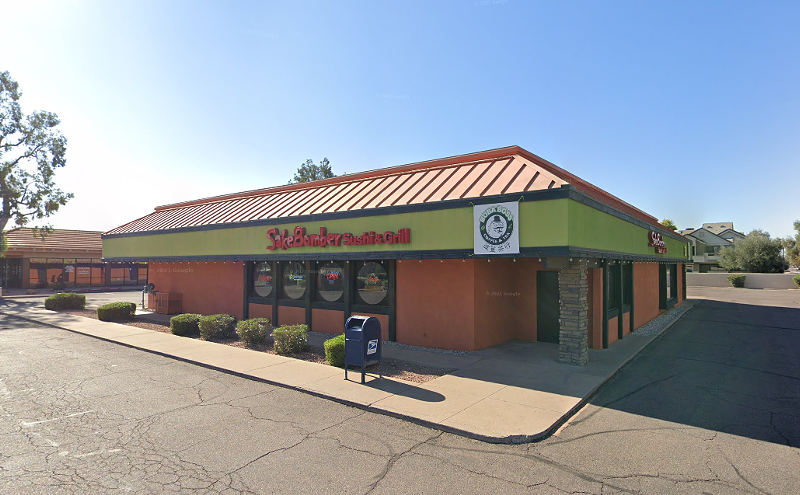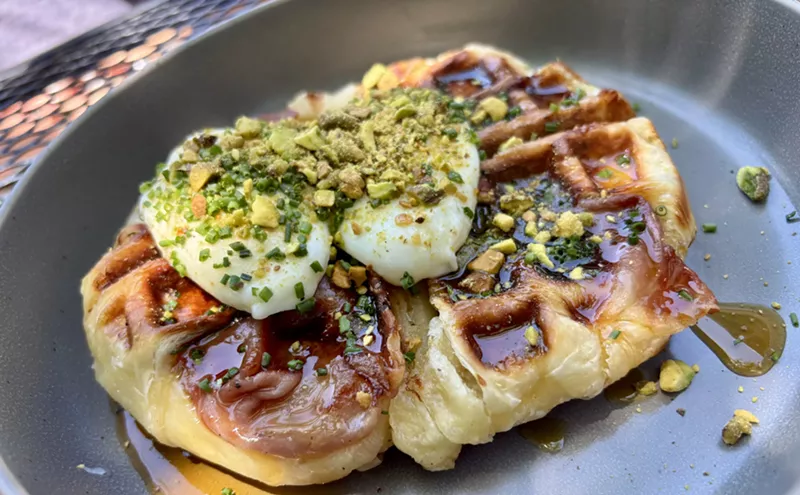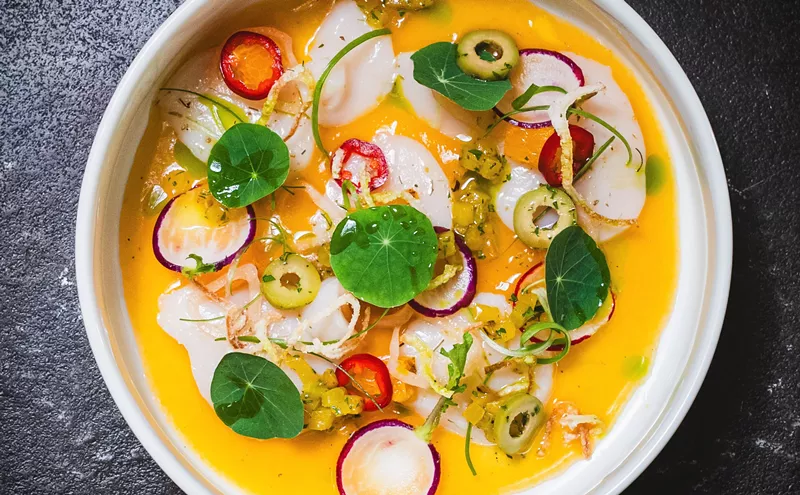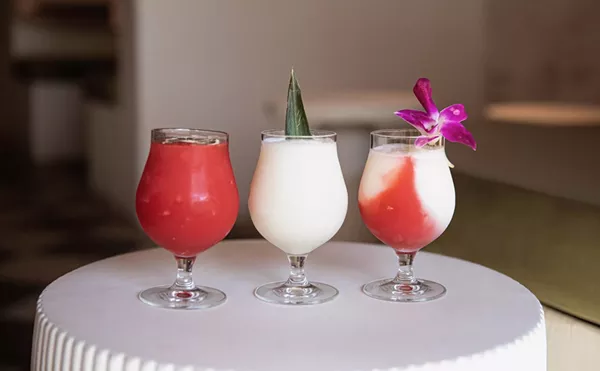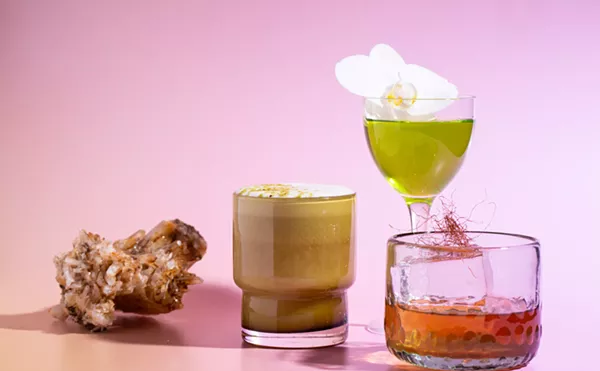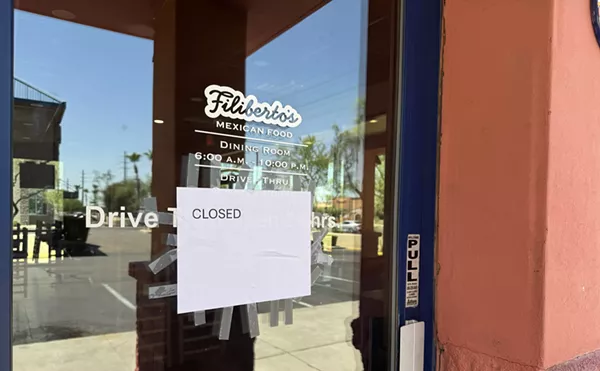The average American experience with sake begins and ends at a Benihana or similar teppanyaki-style Japanese restaurant. It's usually served warm, in little ceramic carafe with matching shot glasses or it's set on top of chopsticks over a glass of some nameless Asian lager and shaken by an earthquake of drunken hands until it falls into the glass below to be quickly guzzled down as a quirky dinner game for college students having a "nice dinner out."
But sake, like most staple alcoholic beverages, has a long and celebrated history dating back to the 3rd Century BCE, when rice agriculture was first introduced to the islands of Japan. It took a millennium of cultivation and practice to invent the drink. The rice used is known as Shinpu-mai is and these particular strains have been obsessively bred over hundreds of years--like regions and grapes for wine.
At Sochu House on Central, the menu lists more than 50 bottles. But bartender Francisco Rocha corrects that.
"We've got hundreds of different bottles, but many of them are larger bottles, or they're just not out at the bar and so they aren't all on the menu," he says.
Moving the product from a vast and diverse stock of sake is likely very difficult when most people don't know the bare bones of what they are looking to order. So, let's get to the basics.
The fermentation process is less like wine-making and more like beer-making: The specific strain of rice is peeled and then washed over and over and over again until all of the dust and loose starch around the outer cuticle are washed away, like water refining a precious gem. Then the rice goes through a painstaking process of steaming, fermenting and adding yeast--right, just like beer-- before being set to rest for between two and three weeks, depending on the preference of the Toji, or brew master.
One thing that Sochu House does that a typical American might find strange: They don't warm their sake when they serve it.
"That's because sake is served warm when it comes from large batches and hasn't been refined as well. It's warm to negate the harsh flavors of cheap product," Rocha says. "Our list is mostly comprised of small batch sake, and warming it would ruin the flavor."
In the same way, Dewars is often mixed with Coke, but it would be crazy to do that with a Macallan 18 (please don't).
"There are two main types of sake that we carry, but there are a lot more, just like wine. We have Nigori, which is cloudy and unfiltered and Ginjo, which is filtered," he adds.
Depending on how many times a Ginjo is filtered, it changes classification to Daiginjo and then Junmai Ginjo and others, increasing the sake value and changing the flavors, like aging a whiskey.
When asked what kind he prefers, like a red or a white, Rocho makes it clear that purity isn't his prerogative. "I like Nigori," he says. "It's sweeter."
Nigori is grainy and oily, but also floral and sweet with a pungent and powdered aftertaste. It is typically un-aged to avoid further fermentation and because of the lack of filtration, needs to be shaken before serving to disperse the starches, sugars and other microscopic solids that give it the distinctive flavor and texture. Ginjo is more pungent, and has an alcohol bite not unlike a very smooth vodka, but with notes like citrus or cardamom and a nice, clean finish.
For all of the rules, history and secrets that go into sake, it's not illegal to explore what the drink can do when paired and mixed in a balanced cocktail, and Sochu House does that well with a full list of "saketinis."
Rocha initially joked that they ruin the sake by mixing it into a cocktail, but then made himself clear.
"Sake has great versatility, and it's fun to play around with in different drinks with different flavors."
He made a Grapefruit Saketini with Sho Chiku Bai Cream Nigori, grapefruit juice and jasmine-infused Tombu (a Japanese rice vodka). The jasmine in the Tombu heightened the vanilla and violet notes in the sake rather than diluting them. The grapefruit was tart, but not too sweet so that those subtle floral notes could shine.
With only a handful of restaurants in town that carry and advertise an assortment of sake, it's a difficult booze to get friendly with or learn about. But taking the time to learn about it and experiment with it is fun, interesting and delicious.
Sake is sold by the bottle at Sochu, for between $10 and $60, and the Saketinis are all $11.



